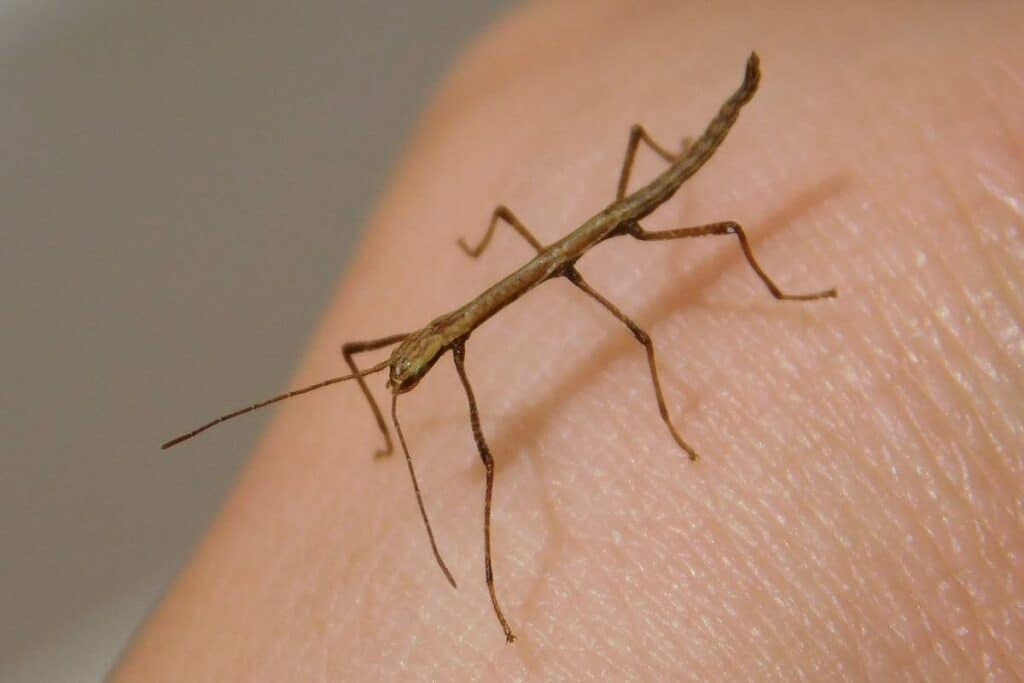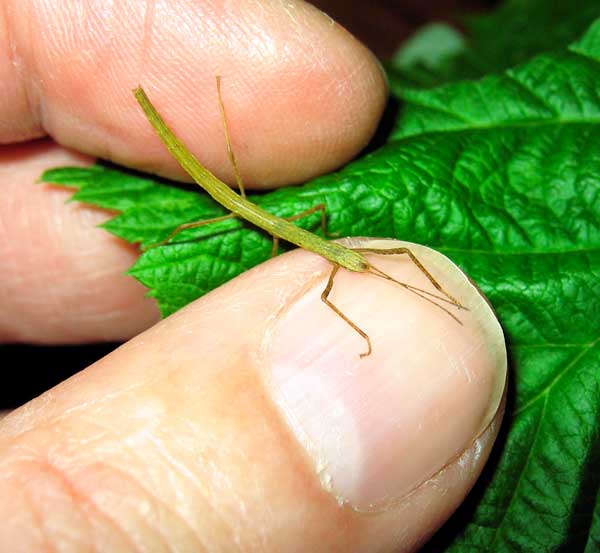Table of Contents
Among the countless species of stick insects, the Indian stick insect makes the best pet, particularly for beginners and children. Indian stick insects are tropical insects that are relatively hardy and quite tolerant of a variety of conditions. They are hardy enough that they tend to be the favourite of scientific researchers, earning them the nickname ‘laboratory stick insect’. Given their hardiness, how long do Indian stick insects live?
Indian stick insects live to between 6 months and one year in the wild (in their natural habitat). In captivity they can live up to 12-14 months, depending on conditions.
As mentioned above, under normal conditions in the wild, the Indian stick insect lives between six months and one year. Yes, that is a significant amount of variation. But you have to remember that animals of all kinds are exposed to a lot of different things in their natural environments. From predation to weather and disease, there are plenty of variables capable of influencing lifespan.
Indian stick insects kept in captivity are likely to live closer to one year as long as they are well taken care of. If not, incorrect feeding and disease are just two of the many things that could shorten an insect’s life.
For more advice and information on keeping and looking after stick insects, check out my ebook on Amazon click here
(opens in a new tab).

Feeding Your Indian Stick Insect
The Indian stick insect’s normal diet consists mainly of privet, a family of shrubs and small trees found in Asia, Europe, Oceania, and some parts of North America. You should be able to get privet online or at your local pet store. If not, Indian stick insects can survive just fine on bramble and some other types of leaves.
Some people who keep Indian sticks as pets do not bother purchasing food. Instead, they just collect bramble from local fields. Should you decide to do this, avoid any bramble found close to the road as contaminants from car exhaust can make it inedible. Any bramble you do collect from the wild should be washed before you feed it to your pet.
One mistake that stick insect owners often make is not providing enough food. Remember that just like with human, how long stick insects live will depend on the availability of good food.
Indian stick insects are nocturnal, so they like to feed at night. The best time to put food in your enclosure is just before the sun goes down. If necessary, put a bit more feed into the enclosure before you go to bed. Then check one more time when you get up in the morning. As long as there is at least some food in the enclosure at all times, your pet will be fine.
Handle Your Stick Insect with Care
Despite the hardy nature of Indian stick insects, all stick insects are quite fragile. Unfortunately, mishandling stick insects is one of the leading causes of premature death. The one word to remember here is caution.
is one of the leading causes of premature death. The one word to remember here is caution.
It is a wonderful experience to allow your Indian stick insect to crawl on your arm. More often than not though, an insect will have to be tamed before this can be a regular occurrence. Again, be cautious. Place your hand in the enclosure and wait to see if the insect will climb on voluntarily. If not, a gentle nudge from behind is okay, but don’t be too rough.
Also remember that stick insects have claws at the bottom of their legs. These claws can easily get caught in clothing, upholstery, or even your hair, forcing the stick insect to drop a leg in order to free itself. Dropping one leg is usually not a big deal. But dropping more than one could lead to premature death.
in order to free itself. Dropping one leg is usually not a big deal. But dropping more than one could lead to premature death.

Maintaining a Good Temperature
As described above, Indian stick insects are tropical creatures by nature. So even though they can survive in a variety of environments, it is best to keep the ambient temperature in and around your enclosure in the region of 21-26C (70-80F) whenever possible. Consistent exposure to cold temperatures could be problematic for your pet’s health.
Experts recommend using a head mat when external heat is necessary. Avoid using a tungsten bulb that could dry out the air and thus promote dehydration of your insect. Your pet can even burn itself if it got too close to a bulb.
Watch for Disease
Believe it or not, your stick insect can get ill. Along with improper feeding and mishandling, disease is yet another cause of early death among Indian stick insects. The most important thing to pay attention to is the appearance of fungus. You may see fungus on your insect’s legs or, if you are dealing with a female, on the eggs she lays.
Eggs with fungus on them should be discarded immediately. Do not try to hatch them in hopes that the nymphs will come out healthy. They most likely will not and allowing the eggs to remain could cause the fungus to spread. As for an adult with fungus on its legs, remove it from the enclosure immediately if there are other adults present. There is really nothing you can do to nurse the sick insect back to health, but you surely don’t want to pass the fungus to other insects in the same enclosure.
You can prevent fungus by regularly cleaning your enclosure and adding woodlice to it. Woodlice keep fungus at bay by feeding on the things that promote fungus growth.
How long do Indian stick insects live? Under normal circumstances and with good care, the average Indian stick insect can live for up to a year. Under certain conditions, lifespan could be as low as six months or just a bit more than a year. So just take care of your Indian stick insects the best you can and let nature take its course.
the best you can and let nature take its course.

